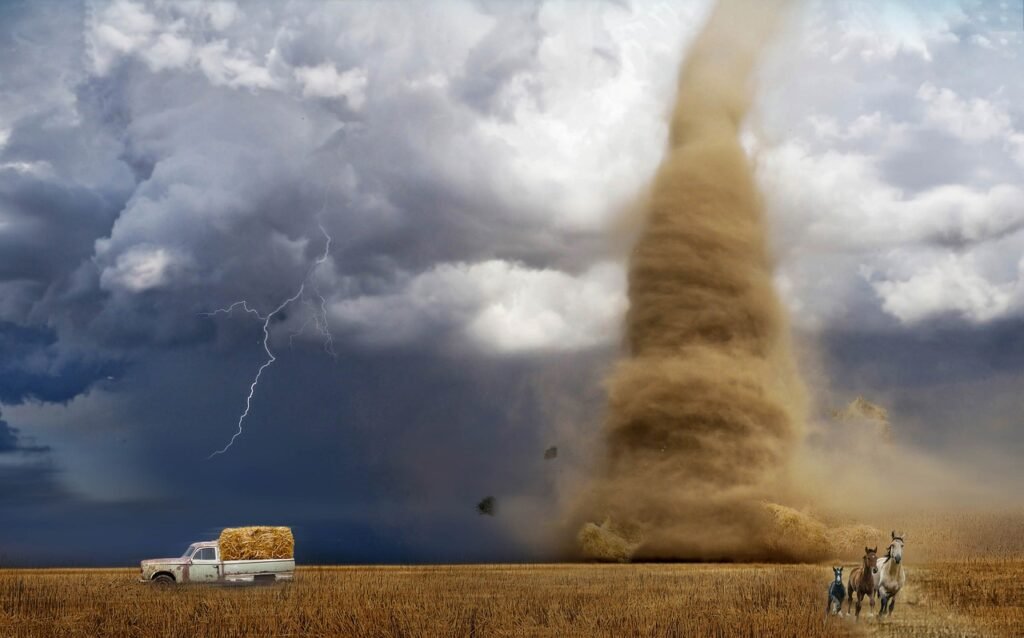On the night of June 20, 2025, a violent tornado ripped across rural southeastern Enderlin, North Dakota and nearby region. What began as another severe-weather threat turned into a historic event: the first confirmed EF5 tornado in the U.S. in 12 years.
The upgrade to EF5 status came months later after detailed damage assessments revealed wind speeds over 200 mph and extreme structural devastation. This event ends a long drought since the previous U.S. EF5 (in Moore, Oklahoma in 2013) and raises important questions for tornado-preparedness even in rural places.
Background: What is an EF5 tornado?

Tornadoes in the U.S. are rated under the Enhanced Fujita scale (EF-scale), which classifies tornadoes from EF0 (weakest) to EF5 (most catastrophic) based on damage indicators and inferred wind speeds. An EF5 rating implies winds of over 200 mph, homes completely destroyed, foundations swept clean, large objects lofted or thrown, and other extreme damage metrics.
Because the rating depends on available damage evidence (rather than direct wind measurement), many intense tornadoes may not receive EF5 status unless they hit robust structures or pose clear forensic evidence.
The June 20, 2025, Tornado: Path & Intensification
Late on June 20, 2025, a supercell thunderstorm produced a tornado near Enderlin, North Dakota. It touched down at approximately 11:02 p.m. CDT.
The tornado traveled a path of about 12.10 miles, peaked at a width of around 1.05 miles, and remained on the ground for about 19 minutes. Initially rated EF3 in immediate aftermath, the tornado was later upgraded to EF5 on October 6, 2025, after forensic damage analysis.
Why the Upgrade to EF5?
The rating upgrade hinged on extraordinary damage indicators:
- Several freight-train cars (including empty tankers and loaded hoppers) were derailed, lifted, or thrown.
- Wind speeds estimated to exceed 210 mph based on object trajectories and damage evidence.
- Severe structural damage including complete leveling of well-constructed homes, extensive tree debarking, and ground scouring.
Because of these data, the event met the criteria to be classified as EF5 — ending the 12-year gap since the last one in 2013.
The Historical Significance: The End of a 12-Year EF5 Drought
Before this tornado, the last EF5-rated tornado in the U.S. occurred on May 20, 2013, in Moore, Oklahoma.
That 12-year interval represents the longest such gap on record since the adoption of the EF scale in 2007.
The Enderlin event thus carries historic weight — it is a reminder that while EF5s are extremely rare, they are not impossible.
Impact & Human Toll
While Enderlin is a small rural town, the tornado still had destructive effects:
Three fatalities were confirmed in the path of the tornado. Significant damage to homes, outbuildings, farm infrastructure, and the freight train cars.
A declared statewide disaster in North Dakota, mobilized resources for clean-up and assistance.
The Bigger Picture: Tornado Outbreak of June 19-22, 2025
The June 20, 2025, tornado near Enderlin, North Dakota is more than a local weather event — it was a landmark storm and part of a larger outbreak and derecho event during June 19–22, 2025, affecting the northern Great Plains and parts of Canada.
By attaining EF5 status, it ended a decade-plus gap in such high-end tornado classifications in the U.S. It reminds us that nature’s extremes still surprise us, and that preparedness must span all regions and all levels of risk. As awe-inspiring as the meteorology is, the human takeaway is plain: take every tornado threat seriously, because under the right conditions, the next “impossible” event may be closer than we think.

Hi, I’m Andrew, and I come from India. Experienced content specialist with a passion for writing. My forte includes health and wellness, Travel, Animals, and Nature. A nature nomad, I am obsessed with mountains and love high-altitude trekking. I have been on several Himalayan treks in India including the Everest Base Camp in Nepal, a profound experience.




